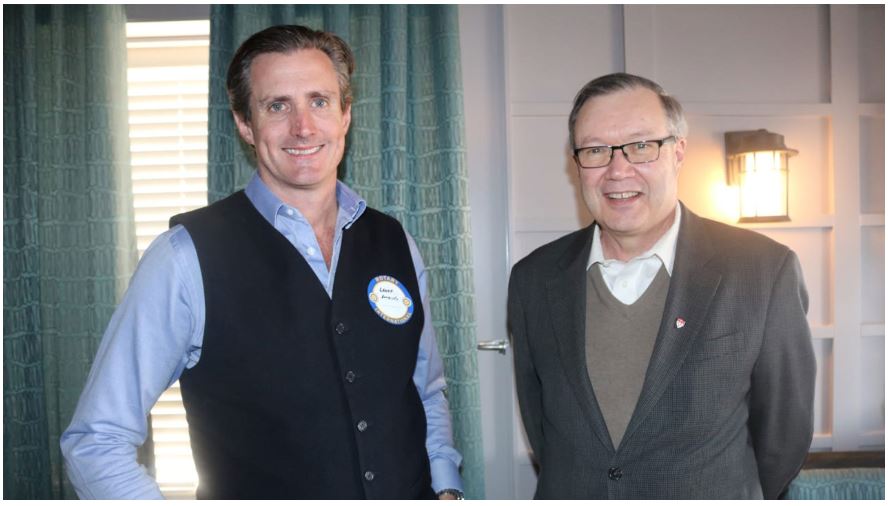
Managing Director, Geoff Atkins, left, and Avalon Minerals CEO, Don Bubar, rightImage
Sourced Northern News Services
- Rare earth explorer Vital Metals (VML) has announced a big resource upgrade at the North-T Zone of the Nechalacho project in northwest Canada.
- The new estimates put the total measured and indicated resources at more than 9000 tonnes of light rare earth oxides.
- While it’s not the largest or richest deposit in the world, Vital’s capacity to exploit the resource is what sets North-T apart.
- Test work achieved concentrate grades of over 35 per cent rare earth oxides via conventional ore sorting technology, without use of chemicals or water.
- This avoids expensive cracking and leaching plants with associated costs for tailings dams and storage facilities
The company anticipates it will have a low cost but high-value product for sale, with minimal up-front capital cost. - Vital Metals is steady today and shares are trading for 0.8 cents each.
Rare earth explorer Vital Metals (VML) has announced a big resource upgrade at the North-T Zone of the Nechalacho project in Canada.
The company is touting it as “another step toward the company becoming North America’s next rare earth mining company.”
What have they found at North-T?
Vital Metals is possibly right in touting Nechalacho as big news in the world of rare earths (RE). While the total resource at North-T is not huge, the value lies in its accessibility and ease in processing.
The mineralised area consists of a bastnaesite subzone which is mostly found within 30 metres of the surface, dipping down to 45 metres at its deepest point. There is also a xenotime subzone beneath the bastnaesite.
Xenotime mainly contains yttrium, and can hold traces of thorium and tungsten. Bastnaesite can be exploited mainly for cerium, but can also contain other rare earths such as lanthanum, yttrium, and thorium, and is is typically easier to process and recover RE’s than it is for xenotime.
Ore sorting test work on the bastnaesite achieved concentrate grades of over 35 per cent rare earth oxides (REO) via conventional ore sorting technology, and without the use of chemicals or water. The cost of concentrating ore without the use of water and chemicals is substantially lower than a typical REO concentration process, which requires extensive crushing, chemicals and expensive cracking and leaching plants with associated costs for tailings dams and storage facilities.
Therein lies the beauty of North-T – the concentrated, near-surface zone of bastnaesite is easy to mine and process, yielding a low-cost, high-profit starter project for Vital to get a foot in the door of the RE market.
Resource upgrade
The people at Vital must’ve skipped a heartbeat or two when the final results came back. The resource upgrades are impressive –
Vital Metals Managing Director Geoff Atkins says North-T will provide the company an incredible stepping stone into becoming a serious rare earths producer.
“These results make the North-T Zone amongst the highest grade rare earths deposits in the world,” he said
“Coupled with the ability to produce a high-grade concentrate from simple ore sorting provides Vital the confidence to push forward towards its target of developing one of the world’s lowest-cost rare earth operations.”
Vital Metals Managing Director Geoff Atkins
The new estimates put the total measured and indicated resources at 9102 tonnes of light rare earth oxides. While it’s not the largest or richest deposit in the world, Vital’s capacity to exploit the resource is what sets North-T apart.
With the ability to easily recover concentrates over 35 per cent, the company anticipates it will have a low cost but high value product for sale, with minimal up-front capital cost compared to other world class rare earth projects.
Vital Metals is steady today and shares are trading for 0.8 cents each at 10:47 am AEST.


Leave a Reply